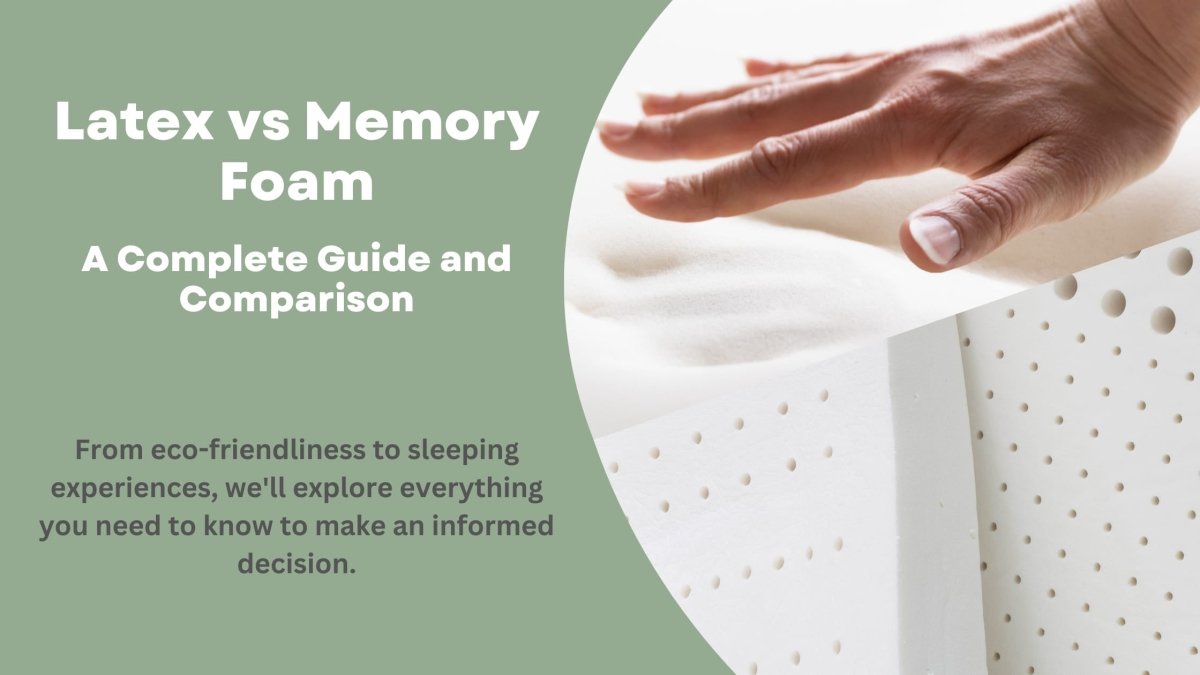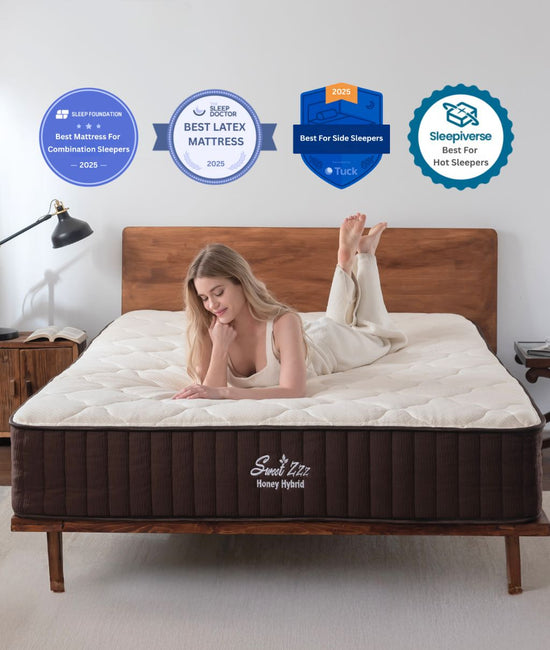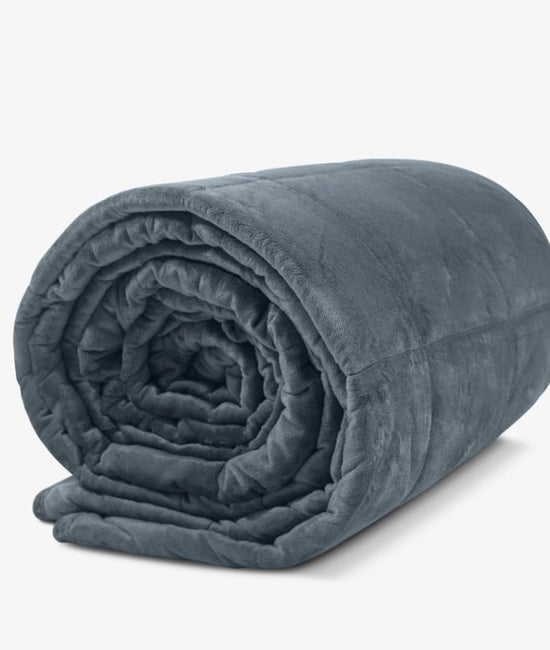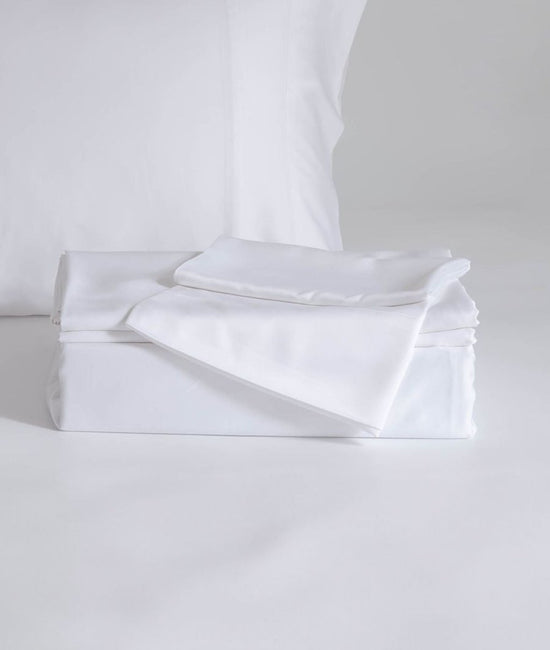Best Sleeping Positions For Lower Back Pain
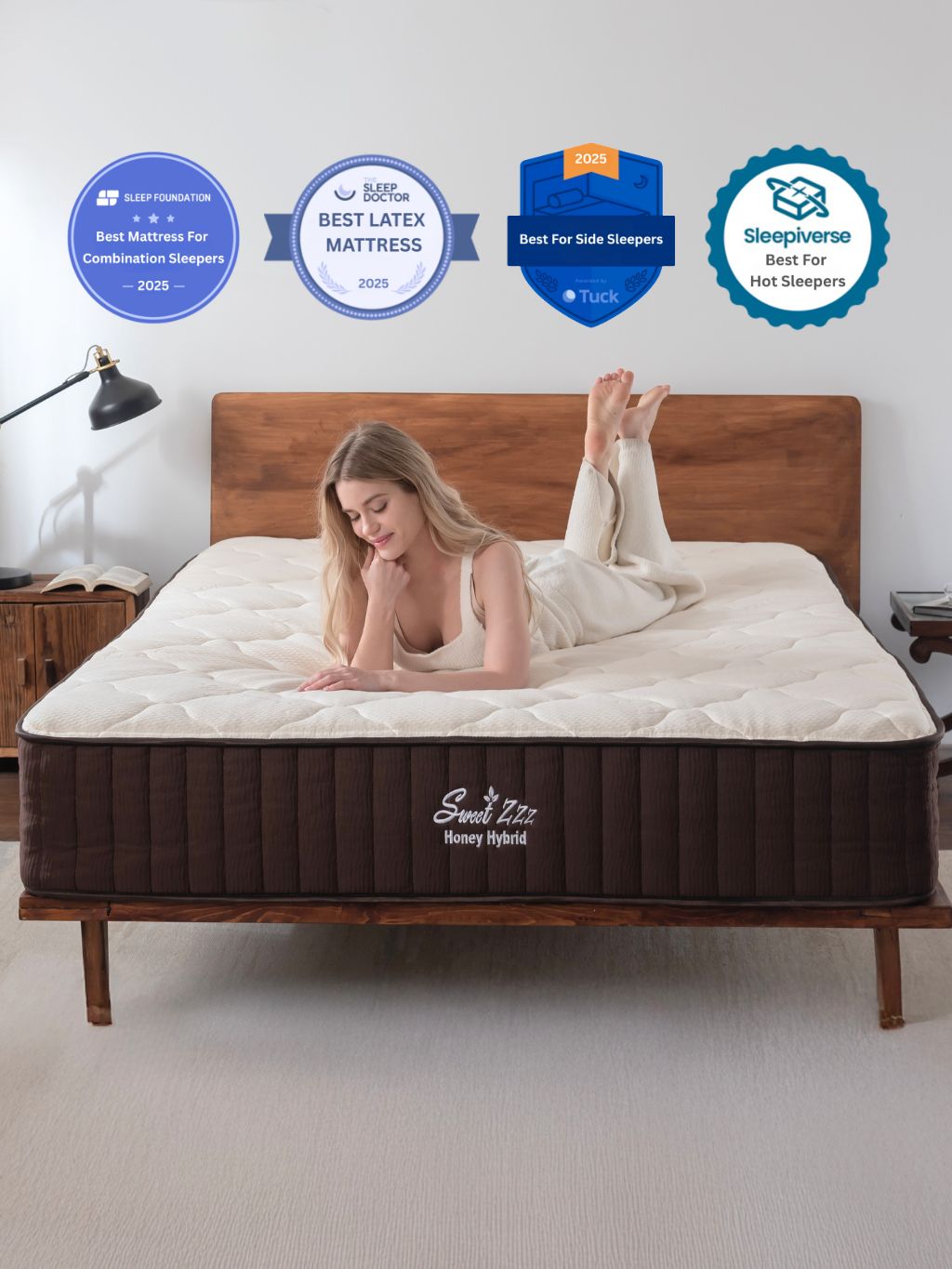
Back pain can bring down the strongest person. When your back hurts, it can be hard to stand upright, bend over, and do the most mundane daily chores.
If you have lower back pain, you’re not alone. It’s a top cause of disability in the U.S., and half of Americans suffer from back pain every year.
Most of these issues are related to mechanical problems, and many of these can be easily remedied by changing their sleeping habits.
Certain sleeping positions can aggravate back pain while the best sleeping position can significantly improve symptoms. If you have back pain, keep reading. We can help you get back on the road to better back health.
What Causes Back Pain?

The back is an extremely complex area with numerous structures . The spine comprises vertebrae that are designed to protect the spinal cord while providing a certain amount of flexibility for the back. Between each set of vertebrae are discs that cushion them from the pressure of the spinal column. These little donut-shaped discs have soft jelly-like centers surrounded by firm outer rings. The lower back is also home to many ligaments, muscles and nerves as well as blood vessels and lymph nodes.
Each part of the back is necessary for movement and function. The lower back protects the pelvic region and provides support to the abdomen and spine.
Any injury or strain to this area can lead to acute or chronic lower back pain, including:
Lumbar strain
The most common cause of lower back pain, lumbar strain is often caused by improper lifting or bending, overuse injuries or trauma.
Impingement
Bones or other tissues can put too much pressure on nerves, causing irritation, inflammation and pain.
Sciatica
Sciatica is characterized by pain that moves from the lower back and buttocks to the leg. It occurs when the harder outer ring of the nerve deteriorates, which causes the softer center to rupture, or herniate, leading to shooting pain, numbness and tingling.
Arthritis
Osteoarthritis, psoriatic arthritis and other types of arthritis can affect the lower back, leading to stiffness, joint pain and inflammation.
Spondylosis
The natural aging process can lead to changes in the cartilage, leaving it thinner and more fragile. This includes the cartilage in the discs and joints of the vertebrae. Degenerative changes in this region are called spondylosis.
No matter what is wrong with your back, a good night’s sleep can help your body heal.
How to Get a Good Night's Sleep

Learn how to get a good night's sleep with these five tips:
- Maintaining a regular sleep schedule by going to bed and getting up at the same times every day
- Trying to get at least 7 hours of sleep a night
- Establishing a bedtime routine that helps you relax before you get into bed
- Using your bed only for sleep and intimacy rather than reading, TV watching and other activities
- Avoiding heavy meals, alcohol and caffeine in the late afternoon and before bedtime
You also need to ensure you’re sleeping the right way. Awkward sleeping positions can result in waking up with pain or tossing and turning all night long.
Best Sleeping Positions for Lower Back Pain
Sleeping on Your Back

This is the best sleeping position for people with back pain. Keeping your spine aligned while you sleep helps minimize the pressure on sensitive areas. Mattresses that are between 6 and 8 on the firmness scale are ideal for people who sleep on their backs. A mattress that is too firm or too soft can just make things worse.
You can further reduce the pressure by putting a pillow beneath your knees.
Sleeping on Your Side

If you prefer sleeping on your side, you can also use a pillow, but the pillow will need to go between your knees to maintain the natural curve of the spine. There is no best side to sleep on. However, if you have heartburn or are prone to acid reflux, sleeping on your right side can aggravate that. The best side to sleep on if you are pregnant is the left side, which improves blood flow.
Rather than semi-firm mattresses, side sleepers should choose somewhat soft mattresses. The mattress firmness should be between 4 and 6. Both hybrids and memory foam mattresses are good options. Latex tends to be firmer, but a soft latex might also be a good choice for side sleepers.
Sleeping on your side is second best to sleeping on your back for those with back pain.
Sleeping on Your Stomach

Stomach sleeping puts excess pressure on the back and pulls the spine out of alignment and is not one of the best sleeping positions for lower back pain. However, if you are used to sleeping on your stomach, you can make adjustments to your positions to reduce the pressure. Place a pillow beneath your abdomen to reduce the pressure, and look for a firmer mattress. The same guidelines for mattresses apply to stomach sleepers as for back sleepers.
Regardless of how you sleep, the right mattress can make a big difference between getting a good night’s sleep and waking up with lower back pain.
What to Look for in a Mattress
Old, worn mattresses can increase pain, but not all new mattresses are good for reducing back pain, either. Mattress options today are nearly overwhelming, but with a few guidelines, you can learn what to look for in a mattress.
To get the right mattress for lower back pain you need something that offers good back support and pressure relief, such as a memory foam or latex mattress. High-density memory foam is preferable, especially 4 to 5-pound memory foam. If you prefer latex, all-natural latex is the best option. Natural latex can mold to your body and ease pressure points. Wool and cotton are environmentally friendly and breathable layers.
Mattresses have varying degrees of firmness, with 10 as the firmest. A good mattress for lower back pain will vary from moderately firm to firm. Your sleeping positions will play a role in how firm your mattress needs to be to counteract your back pain.
The Best Mattress for Back Pain
Honey Hybrid Mattress
Looking for a mattress that offers both comfort and support? Look no further than the Honey Hybrid Mattress! Made with organic cotton and latex, this mattress offers both softness and breathability, ensuring you stay comfortable all night long.
But what really sets the Honey Hybrid Mattress apart is its patented Honey Micro Coils. These unique coils are designed to offer individualized support based on your weight, body shape, and sleep position, relieving pressure points and providing a more restful night's sleep. Plus, with 1584 Individually Wrapped Coils (in queen size), you can rest easy knowing your spine will always be properly aligned.
In addition to its unique comfort and support features, the Honey Hybrid Mattress also offers ultimate cooling thanks to its breathable materials. Organic latex, cotton, and wool are all used in the construction of the mattress, and even the coils are wrapped with pockets designed to allow for maximum air circulation. This is especially beneficial for hot sleepers who struggle to stay cool at night.
But the Honey Hybrid Mattress isn't just comfortable and cooling - it's also safe and sustainable. All of the materials used in its construction are organic, and the mattress is free from fire retardants and polyurethane foams. Instead, Organic New Zealand Calmera® Wool is used to ensure the mattress is safe for even the most sensitive skin. Plus, the bed is Oeko Tex certified, meaning it's safe for babies and environmentally friendly.
Overall, the Honey Hybrid Mattress offers a unique combination of comfort, support, and sustainability. So if you're in the market for a new mattress, consider giving the Honey Hybrid a try - you won't be disappointed!
Other Tips for Managing Lower Back Pain
- Immediately after an injury, use cold compresses for 20 minutes at a time to calm inflammation. After 48 hours, you can switch to heat if you prefer.
- Try to keep moving as much as possible. Our bodies were made to move. Staying in bed can lead to your muscles becoming stiffer and more painful.
- As you heal, begin to work your back and core muscles to better support the back and reduce the risk of future injury.
- Use good posture and form whether you are sitting at a desk or lifting heavy boxes.
- Maintain a healthy weight, and avoid smoking, which can increase your risk of back problems and injury.
Exercises for Lower Back Pain

People with back pain often took to their beds to rest until their backs healed. Today, we know that approach is counterproductive. Exercise can help keep blood flowing to the tissues and promote healing while combating inflammation, but the wrong moves can aggravate injuries. These five moves can help strengthen the muscles that support your lower back without straining sensitive tissues.
1. Extensions
While lying prone on the floor with your legs straight, use your lower back muscles to raise your head, shoulders and chest. Hold the pose for a second before relaxing back onto the mat.
2. Superman
Stay in the extension position, but this time, raise your left leg and right arm. Hold the pose for a second before repeating the movement with the opposite arm and leg.
3. Crunches
You need a strong core for a healthy back, and crunches are among the best workouts for your abs. While on your back with your knees bent and shoulder width apart, exhale, pull your belly button in and reach towards the ceiling. Hold for one to two seconds, and inhale as you relax back onto the mat.
4. Leg extensions
Lying prone on a table or bench with your hips and legs hanging down, tighten your buttocks on one side and extend one leg upward. Hold the pose for 5 seconds before gently lowering the leg. Repeat several times before switching to the opposite leg.
5. Hip Abductors
This workout targets the muscles that support the pelvis. Lie on one side, back against the wall, and pull your belly button towards your spine. Raise your leg and hold for 2 seconds. Repeat 10 times before switching to the opposite leg.
As always, talk to your healthcare practitioner before starting any exercise regimen.
As you begin to incorporate more back-healthy practices in your day-to-day life, you should start to see improvements. What are you doing to combat lower back pain? Leave a comment below!




